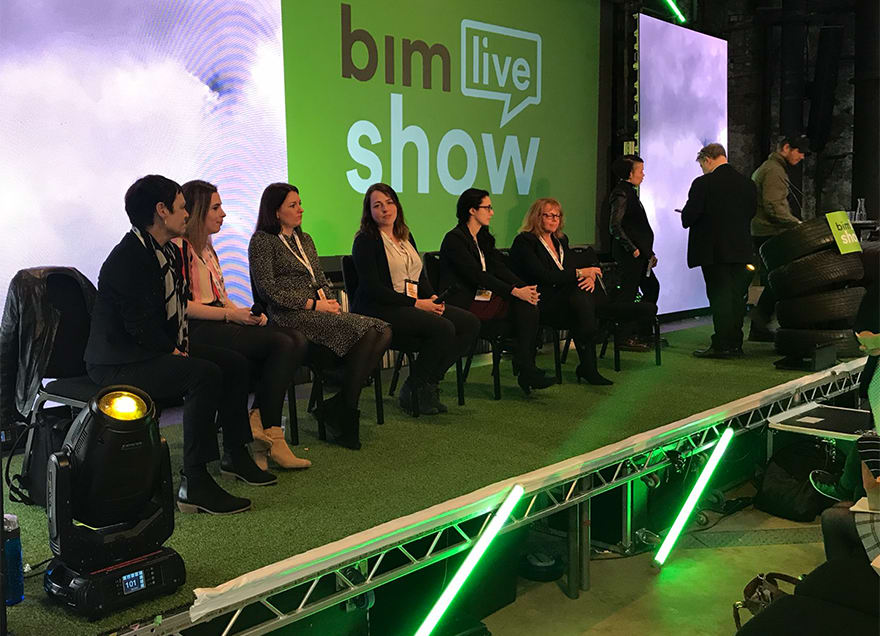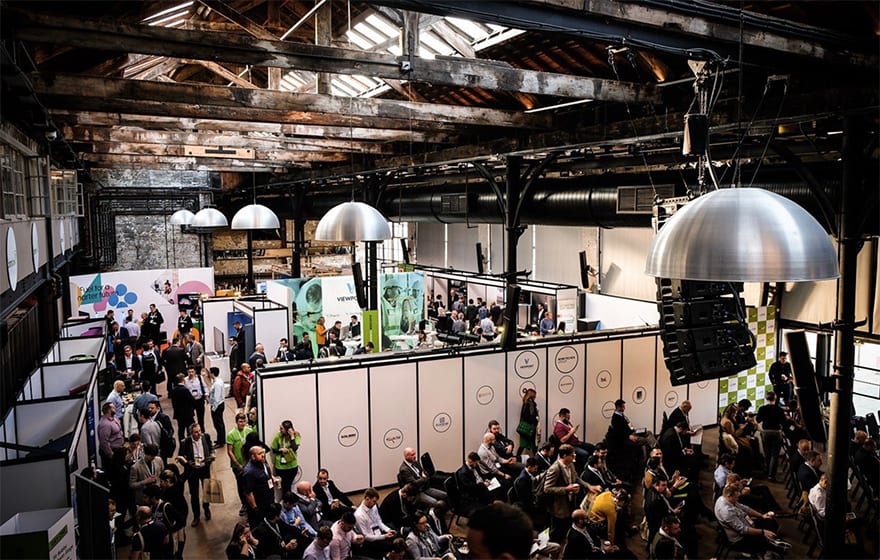
John Adams, digital construction strategist for Glider Technology, toasts the tech, the geeks, the music – and the new-found confidence in last week’s BIM Show Live in Newcastle.
BIM Show Live was back in a sunny and welcoming Newcastle upon Tyne, and despite feeling very familiar to veteran attendees, something had changed.
I intended to write another short and snappy “Five things I learnt at BIM Show Live”, to follow up articles from years gone by – but the change in the wind came from more than just the classes, which means there is so much more to discuss.
So grab yourself a coffee and read my top five observations from what was another classic and transformative BIM Show Live.
We were all wrong to think BIM would damage design
Way back when, I presented to a group of students and finished on a slide that said, “Don’t let BIM make us boring”. There was genuine concern, that designing using the new authoring tools would lead to repetitive aesthetics and uninspiringly technical solutions. Ideas of genius loci, and firmness commodity and delight would be lost in a wave dystopian software-led architecture, where the limitations of available BIM content would affectively kill off creativity.
However, what we didn’t see coming was additive manufacturing, generative design and the unfettered ability to push at boundaries with the safety net of advanced rule-based checking and project rehearsal toolsets.
Maybe the architecture from the early years of this century will be remembered as an experimental exercise of cutting our teeth with new tools, but post-2020 could be heralded as a brave new world of digital arts and crafts where we began to form creative and beautiful components past masters like Charles Rennie Mackintosh could only dream of.
We’re not kids anymore
Those who remember the early days of BIM conferences will remember hearing, or even saying this line: ‘We should be doing this, I’ll speak to my manager’.
Businesses were sending their first digital natives to find out about this BIM thing. Those who completed the circle by listening and acting when the reports came back about technology, standards and processes were somewhat responsible for forming the internationally regarded UK BIM movement.
Many who took BIM seriously early on have climbed the ranks of their respective disciplines at an accelerated rate, to a point where BSL2019 was clearly a room full of decision makers who no longer need approval to explore ideas and adopt technologies that solve real-world project issues.
The meek may be set to inherit the earth, but the geeks are set to inherit the AEC industry sooner than many would have thought.
The woman in BIM, (with a little w)
Women in BIM started as an idea to get more balanced speaker line-ups at BIM events, which made sense because the stages were all often full of balding, white male construction professionals like me. This is just one of many concerted efforts focused on diversifying our industry, and there are real signs they are paying off.
Not only was there an impressive roster of brilliant women speaking at the event, the audience was the most diverse I’ve seen. This went beyond gender improvements to age and race too: for the first time an AEC conference felt representative of society. This goes beyond green shoots of a possible change, into the realms of actual change.

Legal BIM
When it comes to the legalities of BIM, it’s all getting very real, very fast.
We’ve moved from project-based BIM experiments based around the much loved PAS 1192-2 & 3 guidance, to ISO 19650 being a requirement, and contractual data deliverables in a very short time.
Just because you can correct model coordinates or a dataset easier than a project partner, it doesn’t mean that it’s not contractually dangerous. You would never alter someone else’s drawing, or correct someone else’s building work on site, but through the pace of change and innovation we have not allowed our contractual relationships to mature fully around how we deliver even simple data sets, never mind the concept of a fully verified and usable digital twin.
The discussion in this area is moving away from the initial concerns around IP and copyright, into the areas which could open disputes. BIM Show Live has welcomed the construction lawyers into the front end of the industry over the last few years, and we are starting to see the big issues brought into focus.
We’ve long heard that Level 3 will require new contracts, so it’s great to see a level of collaboration which will hopefully allow these to emerge as digital disruption changes the way we work in unrecognisable, and currently uncontractable ways.
New chasms are forming
In 2016, I theorised that the construction industry was trying to cross two chasms in quick succession to achieve Level 2 then Level 3 and the smart cities ideas that were starting to form. Suggesting we might want to start talking about what this may look like before we are stood at the precipice, some agreed, some disagreed, and some refused to read anything that mentioned Level 3 on principle.
At BSL2019 we started to see what that second chasm looks like. The big problems talked about years ago, like how we could all work on the same design model without infringement, no longer seem as valid as the questions around how we benefit from a world of algorithmic design, additive construction, digital ledgers and sensor data from an Internet of Things.
These questions have moved from academic speculation onto the BIM Show stage where our industry is starting to analyse the gaps between the myriad technologies and opportunities that lie ahead.
This is a much more dispersed set of challenges, to the point where they are incredibly difficult to define. The relationship between the technology sector and the AEC industry is becoming stronger each year and shows like BIM Show Live and Digital Construction Week are likely to be where the relationships and definitions we need are built.

Conclusion
Apart from a few notable exceptions, like BIM! The Musical, which was quite insane, the BIM Show Live anarchy is subsiding, giving way to a wave of passionate pragmatism bursting out of a section of the industry which is no longer a niche.
The cast and audience of this year’s show are looking at an industry we have changed together for the better through digitisation, whilst acutely appreciating there is still much work to be done. Best practice was still being shared and new doors were still being opened, but all with a degree of confidence and experience that gives the impression that BIM Show is all grown up, but still very, very relevant.
John Adams is digital construction strategist for Glider Technology, a role where he brings his experience of architecture, AEC software product management, and BIM consultancy together to focus on the asset data lifecycle for AEC clients.
Uniquely developed to bridge data gaps in the asset lifecycle, GliderBIM adds automation, trust and confidence to the emerging art of information management in the AEC industry.
Glider Technology is more than a software company – we know from experience that advancing towards the realisation of digital twins and exploiting genuine business intelligence, every project needs expert knowledge in asset data.
When you partner with Glider for your projects, you get the benefit of our industry-leading team of information consultants and benefit from our tailored information delivery planning service.















